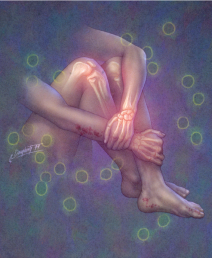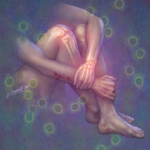
Type 1 lupus covers classic signs that can be measured with the SLE Disease Activity Index. Type 2 symptoms are unclear in origin and have an uncertain connection to inflammation.
A new disease model for lupus tackles issues with fatigue and other serious conditions that, although quite common among patients, get less attention because they fall outside classic symptoms associated with inflammation, a debilitating force behind systemic lupus erythematosus (SLE).
The model features subtypes to categorize two main groups of symptoms into type 1, typically related to inflammation and treated with immunosuppressants, and type 2, which covers common complaints of fatigue, insomnia and depression. The model was developed collaboratively by lupus researchers and clinicians at Duke University Medical Center, Durham, N.C., and outlined in a 2019 review article in Arthritis Care & Research.
“When patients come in and say, ‘I’m tired,’ sometimes the thought is that the tiredness is due to something else,” says David Pisetsky, MD, PhD, a professor of medicine and immunology at Duke and a translational researcher who helped develop the model. “In our model, fatigue is very much a part of lupus, and physicians and other providers should address this symptom as part of their management of the lupus.”
A chronic autoimmune disease that attacks the body’s own tissue and organs, lupus is highly heterogeneous and involves various signs and symptoms. The possibility of organ failure related to local and systemic inflammation is a key concern and often the focus of treatment with immune-suppressing medications.
Type 1: Classic Signs
Type 1 covers classic signs of lupus that can be measured with the SLE Disease Activity Index. They include nephritis, arthritis and vasculitis, and involve symptoms of pain localized to sites of inflammation, such as joints that become swollen and tender.
Type 1 symptoms are easily validated with lab tests, whereas type 2 symptoms are not, says Dr. Pisetsky. Thus, a gulf between inflammation-related symptoms and otherwise serious symptoms exists and has an impact on how doctors communicate with, and treat, patients, he says.
Type 2: Fatigue, Depression, Insomnia
Type 2 symptoms are assessed less well by conventional measures of disease activity, are unclear in origin and have an uncertain connection to inflammation. Even though a large majority of lupus patients experience fatigue and many also have chronic pain, cognition difficulty and bouts of depression and insomnia, these symptoms are not part of the established measurements of lupus.
“All of these symptoms cause significant problems for patients with lupus and a great deal of distress,” says Dr. Pisetsky. “Yet, in the conventional measures of disease activity, they are not well represented.”

